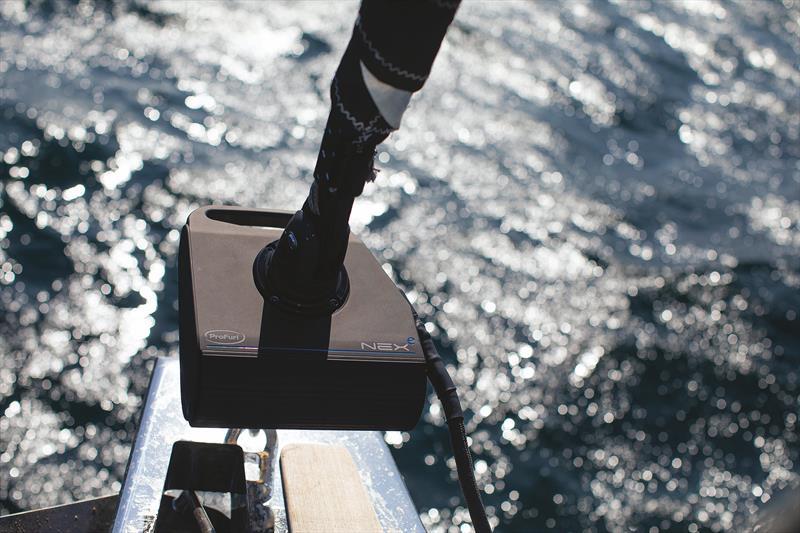
NEXe Furler - Effortless Furling powered by Profurl
by Naomi Copperweight 12 May 2022 08:00 UTC

NEXe Furler - effortless furling powered by Profurl © Jean-Sebastien Evrard
The NEXe from Profurl is an easy to retrofit electrically driven Code 0 (Code Zero) or top-down gennaker furler. With the NEXe, you can furl / unfurl your sails, from anywhere on the boat, quickly with easily, and you will never have to manually furl your sails again!
Manoeuvring with large sails such as asymmetric spinnakers can prove dangerous, especially with a small crew. The NEXe enables safe and effortless use. Furling and unfurling the sail is a simple task with the remote control, which can be bought separately. It usually only takes 40 seconds to completely furl up!
ProFurl has managed to fit the motor in a compact and flat casing, which allows you to maintain maximum sail luff length. NEXe has a big carrying handle and the stainless steel snap shackle, supplied as standard, allows quick attachment to the bowsprit. The shape of NEXe is designed to sit in the natural position of a traditional flying sail. Two sizes are available at this stage; a 4.0 model for boats up to 50 feet (depending on sail areas, as well as displacement); or an 8.0 size for larger boats.
| | NEXe 4.0 | NEXe 8.0 |
|---|
| Recommended Boat Size – Max (ft) | 50 | 60 |
| Spinnaker Max Sail Area (sq m) | 200 | 250 |
| Power (W) | 800 | 800 |
| Power Supply | 12V or 24V | 12 or 24V |
| Cable Length (m) | 2 | 2 |
| SWL (kg) | 5000 | 8000 |
N.B. for those of you concerned about the model name vs Safe Working Load SWL, this is absolutely correct - the 4.0 has a 5t SWL! Apparently the NEXe first came out as a 5t and 8t SWL versions but to fit in with the new V2 Profurl Nex range, they renamed the 5.0 to a 4.0 but kept the SWL.
Adding the electrical side of this system is easy. Both units are available in both 12V and 24V versions and all you will need is a relay box and circuit breaker (included with your furler); and a waterproof outlet, which will be installed on the front of your boat. Check first if the gear motor is properly plugged in, bear away, unfurl the sail and you're good to go!
Summary
- Easy operations and without effort
- Safety: you can operate it from the cockpit
- Ideal for solo or short-handed sailing
- Fast furling operation
- Easy to install
- No accidental release of the sail
- Sealed unit
If you'd prefer to speak to one of our specialists, who can guide you through the process, contact us at and tell us what you need, 